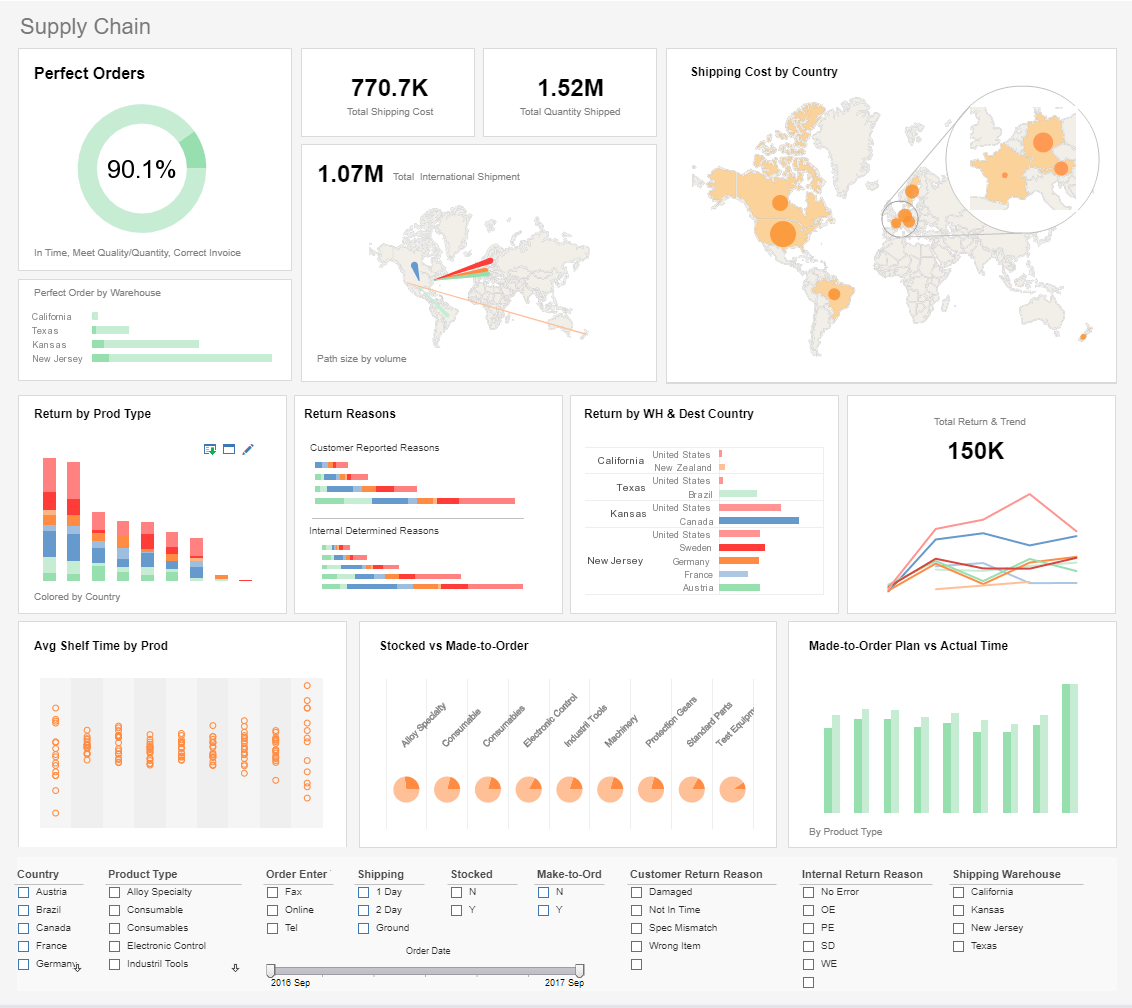Descriptive Analytics Examples
This is the continuation of the article on "How Business Intelligence Changes Firm Management Today"
The next way both employees and leaders use data to transform the way their business is:
2. Increased Operational Efficiency and Asset Utilization
One major part of analytics made possible with business intelligence is descriptive analytics.
"Simply explained, descriptive analytics evaluates business data and converts it into something decision makers can understand and base their actions on. Simple examples of descriptive analytics reports are sales, customer, and operations reports.
By analyzing these reports with business intelligence tools, logistics, warehouse, and asset managers can access the context they need to improve their decisions. For example, a logistics manager can view and monitor key performance indicators in an interactive supply chain dashboard to identify issues and make corresponding decisions quickly.
These are just some of the questions that could be answered here:
- "Why did that specific supplier performed so well this month?"
- "Were there any low stock products that we should have had?"
- "Why did product returns increased for two weeks?"
- "Which products have been returned the most this month?"
To the right is InetSoft's supply chain dashboard that tracks international shipments and a range of product details. You can also view its live version here.
To summarize, descriptive analytics tools use business intelligence data to help managers to answer the question: "What has happened?" and take action immediately.
| #1 Ranking: Read how InetSoft was rated #1 for user adoption in G2's user survey-based index | Read More |
3. Predict and Influence Customer Behavior
One of the best examples of companies using business intelligence tools to impact customer behavior is Starbucks. Data is key to the company's success, and job postings it publishes demonstrate how serious these folks are when it comes to data analysis.
For example, this Starbucks' data scientist job posting from LinkedIn has a long and impressive list of analytics-related experience requirements, take a look.
Machine Learning And Data Product Dev And Deployment
- Under direction of more senior data scientists, contribute to AI and Machine Learning models in batch, real-time
- Develop data pipelines and scalable Restful APIs to create and enable analytical applications
Statistics And Model Development And Deployment
- Leverage the latest cloud technologies, existing and immerging statistical and machine learning techniques to identify data patterns and trends to solve business problems
- With support from more senior data and decision scientists, build and deploy customer segments to facilitate optimal marketing targeting within channels
- Via a "feature factory" approach, build large numbers of weak learners in a Customer 360 framework
Insights Operationalization
- Under the guidance of more senior data scientists, create clear and concise packaging and presentation of
data products and insights to business stakeholders, leaders and the broader analytics community
Data Science Evangelism
- With support from more senior data scientists, establish and foster close collaboration between data and decision scientists, engineers, business and leadership teams to align on technical roadmaps for innovation
- Establish brand and team as subject matter experts and trusted advisors for Analytics across departments
How about that for a daily to-do list?
The person hired for this job has a lot of work at their hands, but it's clear that they will be making a world of difference for the company. |
View a 2-minute demonstration of InetSoft's easy, agile, and robust BI software. |
| Previous: How BI Changes Law Firm Management Today | Next: Customer Behavior Intelligence in Retail |


